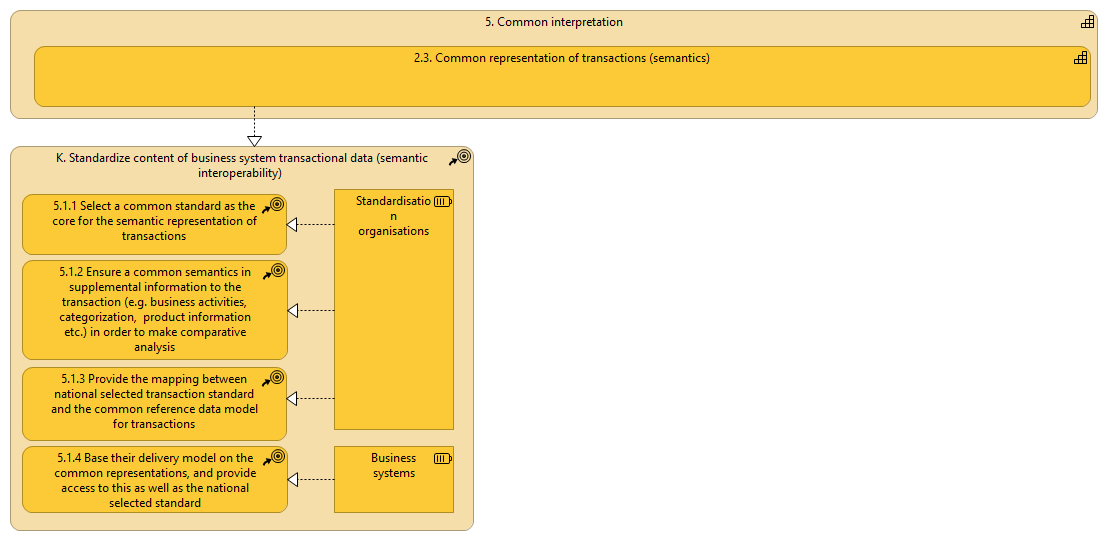| |
|
2.3. Common representation of transactions (semantics) |
K. Standardize content of business system transactional data (semantic interoperability) |
| |
|
K. Standardize content of business system transactional data (semantic interoperability) |
5.1.1 Select a common standard as the core for the semantic representation of transactions |
| |
|
K. Standardize content of business system transactional data (semantic interoperability) |
5.1.2 Ensure a common semantics in supplemental information to the transaction (e.g. business activities, categorization, product information etc.) in order to make comparative analysis |
| |
|
K. Standardize content of business system transactional data (semantic interoperability) |
5.1.3 Provide the mapping between national selected transaction standard and the common reference data model for transactions |
| |
|
K. Standardize content of business system transactional data (semantic interoperability) |
5.1.4 Base their delivery model on the common representations, and provide access to this as well as the national selected standard |
| |
|
Business systems |
K. Standardize content of business system transactional data (semantic interoperability) |
| |
|
Business systems |
5.1.4 Base their delivery model on the common representations, and provide access to this as well as the national selected standard |
| |
|
Standardisation organisations |
5.1.1 Select a common standard as the core for the semantic representation of transactions |
| |
|
Standardisation organisations |
5.1.2 Ensure a common semantics in supplemental information to the transaction (e.g. business activities, categorization, product information etc.) in order to make comparative analysis |
| |
|
Standardisation organisations |
K. Standardize content of business system transactional data (semantic interoperability) |
| |
|
Standardisation organisations |
5.1.3 Provide the mapping between national selected transaction standard and the common reference data model for transactions |

